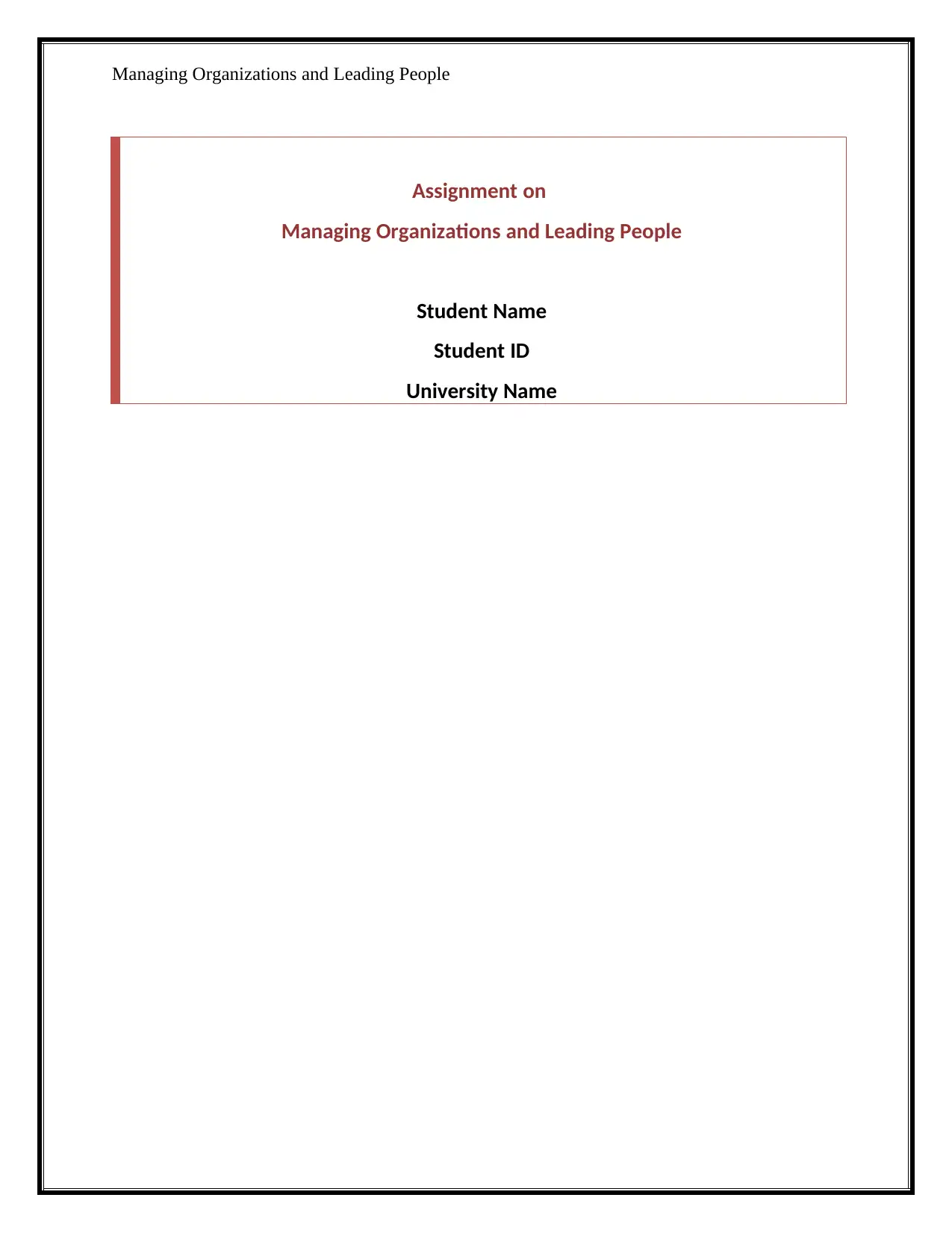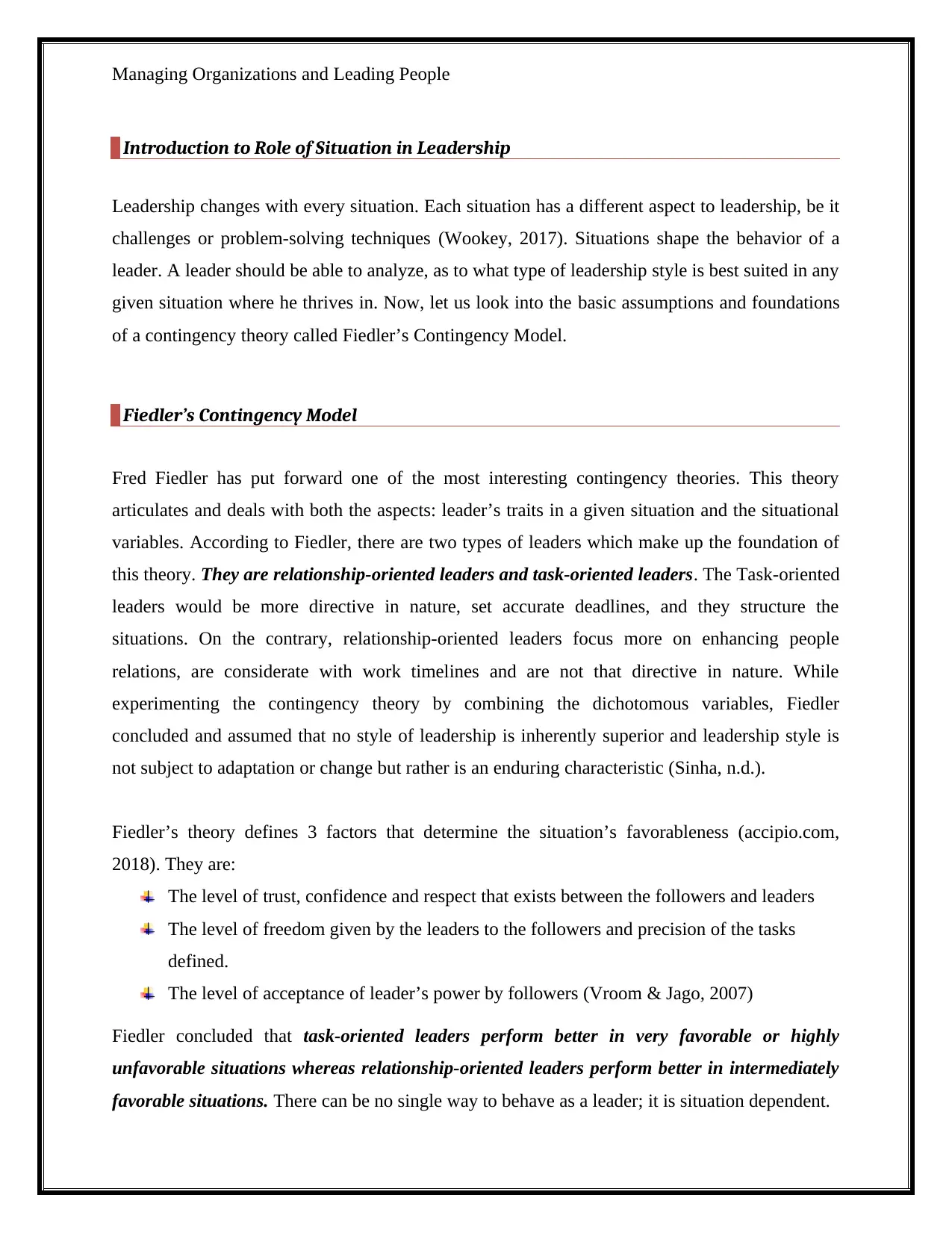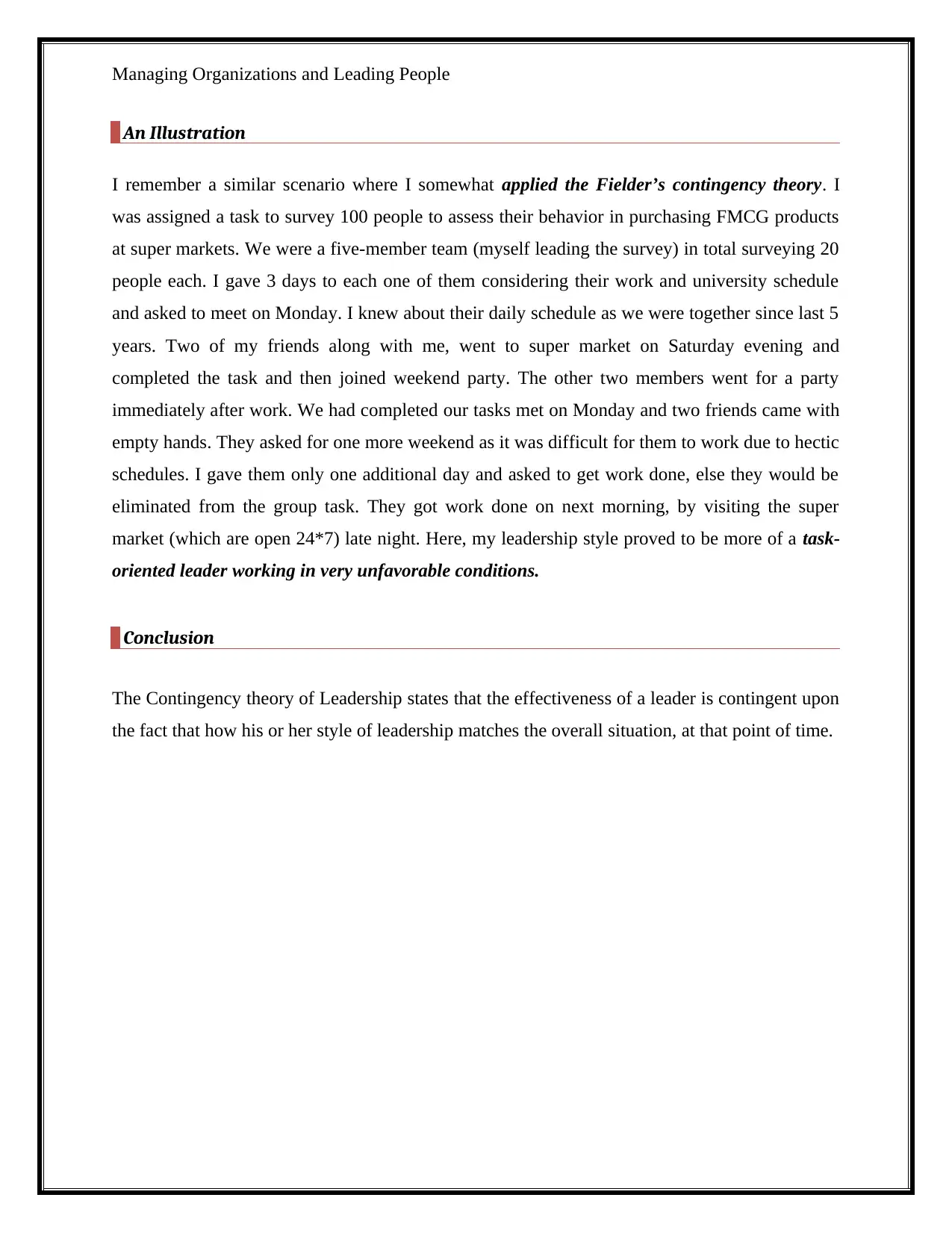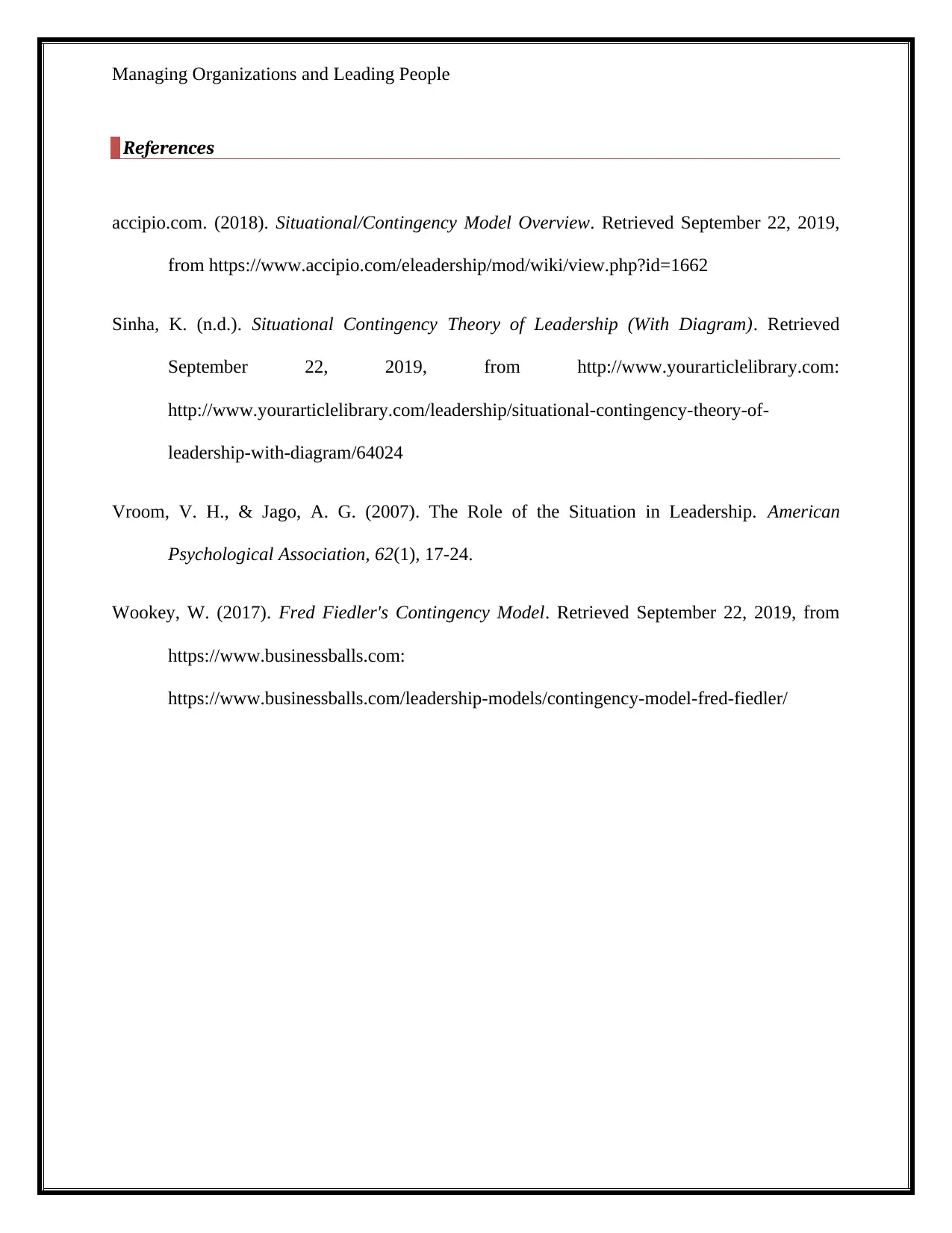University Report: Managing Organizations and Leading People
VerifiedAdded on 2022/10/17
|4
|760
|17
Report
AI Summary
This report delves into the crucial role of the situation in shaping effective leadership, drawing upon Fiedler's Contingency Model. It explores how leadership styles, including task-oriented and relationship-oriented approaches, adapt to various scenarios. The report begins with an introduction to the concept of situational leadership, emphasizing that different situations demand different leadership styles. It then provides a detailed overview of Fiedler's Contingency Model, explaining its core components, including the two primary leadership orientations and the three factors that determine situational favorableness. Furthermore, the report includes a practical illustration, describing a real-world scenario where the student applied Fiedler's theory in a team project. The analysis highlights how the student's leadership style shifted to meet the demands of an unfavorable situation. The report concludes by reiterating the central tenet of contingency theory: the effectiveness of a leader hinges on the alignment between their style and the specific context. The report uses references to support the arguments and concepts presented in the assignment. The report also contains a brief overview of leadership theories and the importance of adaptation in leadership styles.
1 out of 4











![[object Object]](/_next/static/media/star-bottom.7253800d.svg)